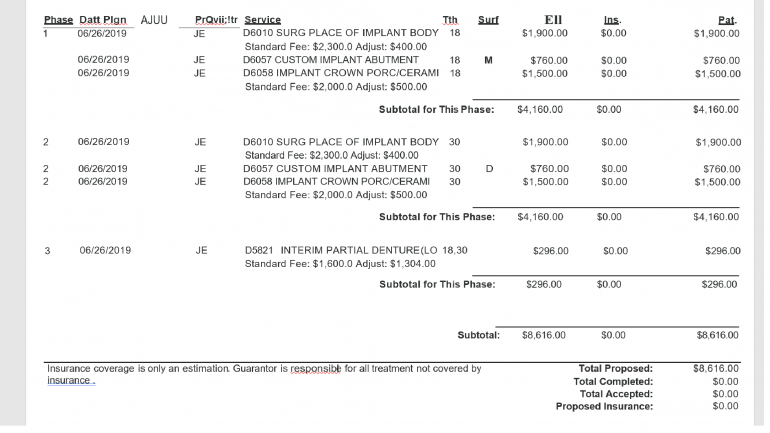
Dental Code D2975: Coping
Dental code D2975 refers to the procedure known as "Coping" in the dental industry. This specific code is used to describe a restorative dental treatment that is an integral part of the overall process of providing patients with a customized dental crown or fixed partial denture.
Dental code D2975 is used to designate the creation of a "coping" during the process of fabricating a dental crown or fixed partial denture. A coping is a thin, metal or ceramic substructure that is designed to fit over a prepared tooth or dental implant abutment. The coping serves as the foundation upon which the final, visible portion of the crown or bridge is built.
Tooth Preparation
The first step in the coping procedure is the preparation of the tooth or dental implant abutment that will receive the crown or fixed partial denture. This involves the careful removal of a small amount of the tooth's existing structure, creating a shaped surface that will allow the coping to fit securely and provide a strong foundation for the final restoration. The goal of tooth preparation is to create a surface that is optimally shaped and sized to accommodate the coping, ensuring a precise and long-lasting fit. The specific amount of tooth structure that is removed will depend on factors such as the existing condition of the tooth, the desired aesthetic outcome, and the specific requirements of the coping and final restoration. Proper tooth preparation is a critical step in the coping process, as it ensures that the coping will fit perfectly and provide a stable and reliable base for the final crown or fixed partial denture.
Impression Taking
Once the tooth or implant has been prepared, an impression, or mold, of the prepared area is taken. This impression captures the precise details of the prepared tooth or implant, as well as the surrounding teeth and gum tissue. This impression is then sent to a dental laboratory, where the coping will be fabricated. The impression-taking process is performed using specialized dental materials and techniques to ensure that the resulting model is an accurate representation of the patient's oral anatomy. This ensures that the coping and final restoration will fit perfectly in the patient's mouth. The impression may be taken using a traditional impression material, such as alginate or polyvinyl siloxane, or it may be captured digitally using an intraoral scanner. Regardless of the method used, the goal is to obtain a precise and detailed record of the prepared area and surrounding structures.
Coping Fabrication
At the dental laboratory, a technician will use the impression to create a model of the prepared tooth or implant. From this model, they will carefully design and fabricate the coping, which is the thin, metal or ceramic substructure that will fit over the prepared tooth or implant. The coping is typically made from gold, base metal alloys, or high-strength ceramic materials, depending on the specific requirements of the patient's case and the preferences of the dentist. The fabrication process may involve a combination of computer-aided design (CAD) and computer-aided manufacturing (CAM) technologies, as well as traditional manual techniques. The goal is to create a coping that fits the prepared tooth or implant with a high degree of precision, providing a stable and reliable foundation for the final restoration.
Coping Fitting and Adjustment
Once the coping has been fabricated, it is sent back to the dentist's office. The dentist will then try the coping in the patient's mouth to ensure a precise and comfortable fit. If any minor adjustments are needed, the dentist can make them at this stage, ensuring that the coping is properly positioned and ready for the final restoration. The fitting process is a critical step, as it allows the dentist to ensure that the coping is seated properly and that it provides a secure and comfortable fit for the patient. If any adjustments are necessary, the dentist can make them using specialized dental tools and equipment, ensuring that the coping is perfectly positioned and ready for the final restoration.
Completion of the Crown or Fixed Partial Denture
With the coping in place, the dentist can then proceed with the fabrication of the final crown or fixed partial denture. This typically involves the placement of a tooth-colored material, such as porcelain or composite resin, over the coping to create the visible, aesthetically pleasing portion of the restoration. The final restoration is then bonded or cemented to the coping and the prepared tooth or implant, completing the process. The choice of materials used for the final restoration will depend on factors such as the patient's preferences, the location of the tooth, and the specific requirements of the case. Regardless of the materials used, the goal is to create a restoration that is durable, functional, and aesthetically pleasing, providing the patient with a high-quality, long-lasting dental solution.
Summary of Dental Code D2975
Dental code D2975, or "Coping," is an essential component of the process of creating a custom dental crown or fixed partial denture. The coping serves as a strong, precise substructure that supports the final restoration, ensuring a durable and well-fitting result for the patient. By understanding the detailed steps involved in the coping procedure, patients can better appreciate the care and expertise required to provide them with high-quality, long-lasting dental restorations.
Visit Dr. BestPrice for all your dental needs and find the best prices on Dental Code D2975: Coping procedures.
